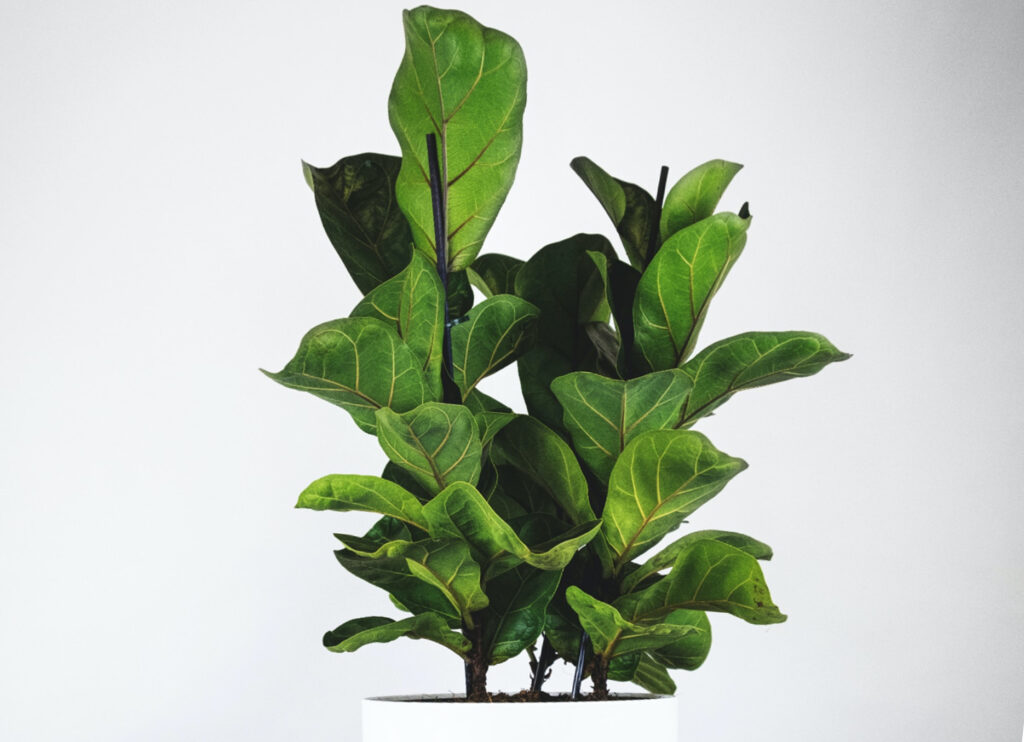The Fiddle Leaf Fig, a tropical plant with large, glossy leaves, has taken the world by storm in recent years, becoming one of the most popular houseplants around. Its rise to fame has been nothing short of meteoric, with social media feeds, home decor magazines, and even office spaces all featuring this stunning plant. But what is it about the fiddle leaf fig that has captured the hearts and minds of so many? In this article, we will explore the myriad reasons behind the fiddle leaf fig’s popularity, from its undeniable aesthetic appeal to its surprisingly easy care requirements. Whether you’re a seasoned plant enthusiast or a budding interior designer, the fiddle leaf fig is a must-have addition to any collection. Prepare to be amazed by the wonder that is the fiddle leaf fig and get a better understand why Fiddle Leaf Figs are so popular.
The Appeal of Fiddle Leaf Figs: Aesthetic and Practical Benefits
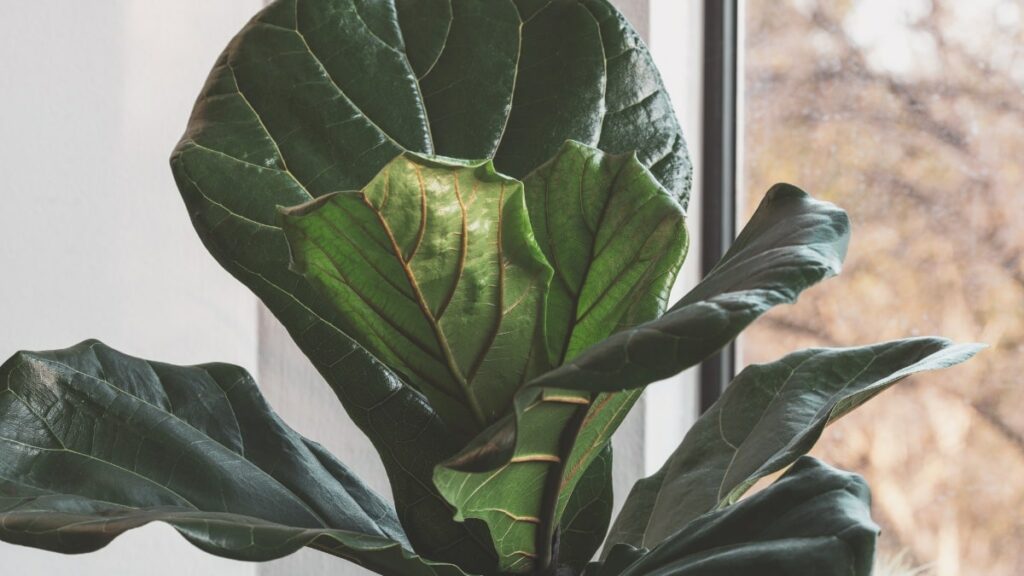
The fiddle leaf fig has taken the world of houseplants by storm, becoming one of the most sought-after additions to any home. Its striking silhouette and large, glossy leaves make it a standout choice for those looking to add a touch of greenery to their living space. But the appeal of this plant goes beyond just its aesthetic qualities.
One of the most practical benefits of the fiddle leaf fig is its ability to purify the air. Like many other houseplants, it has the power to remove toxins from the air, creating a healthier living environment. Additionally, its large leaves can absorb sound, making it an ideal choice for rooms with high ceilings or hard surfaces that tend to echo.
Another practical benefit of the fiddle leaf fig is its low maintenance requirements. While it does require bright, indirect light and regular watering, it is relatively easy to care for compared to other houseplants. This makes it a great choice for busy homeowners or those who are new to plant care.
But let’s not forget about the aesthetic appeal of the fiddle leaf fig. Its tall, sculptural form and lush foliage make it a statement piece in any room. It can be used to add a touch of greenery to minimalist spaces or to complement more eclectic decor styles. And because it is such a popular plant, there are countless resources available for styling and caring for it, making it easy to incorporate into any home.
Overall, the fiddle leaf fig’s appeal lies in its combination of practical benefits and aesthetic appeal. Whether you’re looking to improve your indoor air quality, add a statement piece to your decor, or simply enjoy the beauty of nature indoors, the fiddle leaf fig is a great choice.
Fiddle Leaf Fig Care: Understanding the Basics
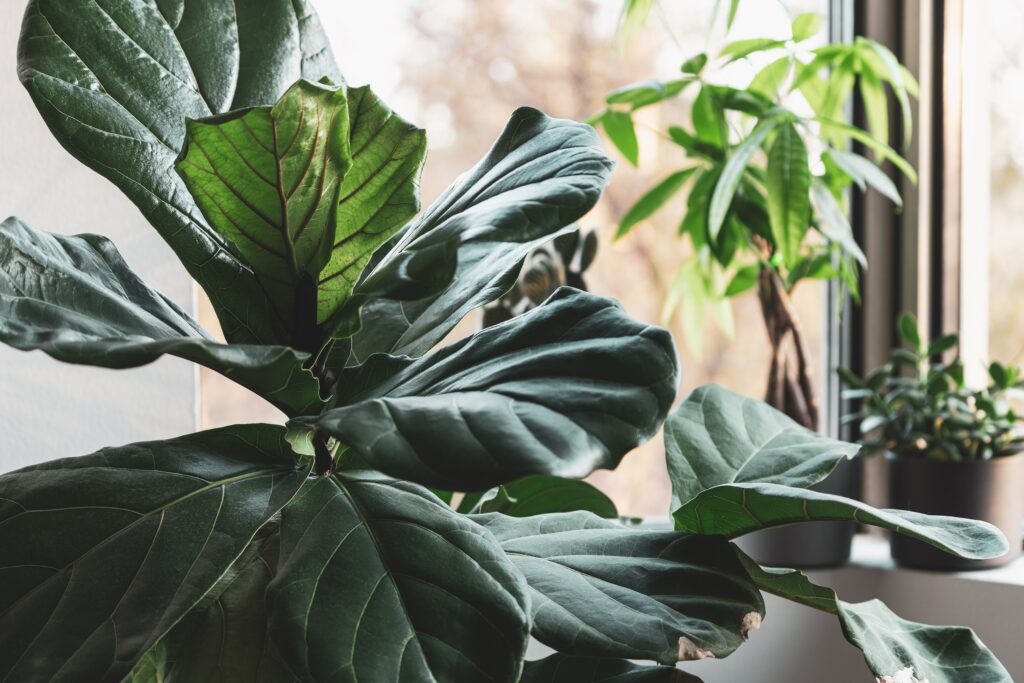
Fiddle leaf figs are a sight to behold, with their stunning appearance and ability to add a touch of elegance to any room. However, to keep these plants healthy and thriving, it is important to understand the basics of fiddle leaf fig care.
When it comes to lighting, fiddle leaf figs require bright, indirect light to thrive. They should be placed near a window that receives plenty of natural light, but not in direct sunlight. Direct sunlight can scorch the leaves and cause damage to the plant, which is not ideal.
Watering is another crucial aspect of fiddle leaf fig care. Overwatering is one of the most common mistakes made when caring for these plants. These plants prefer to be kept on the drier side, so it is important to allow the soil to dry out slightly between waterings. When watering, be sure to thoroughly saturate the soil and allow any excess water to drain away, as this can lead to root rot.
Humidity is also a key factor in fiddle leaf fig care. These plants prefer a humid environment, so it is important to keep the air around them moist. This can be achieved by misting the leaves regularly or placing a humidifier nearby. This will help to prevent the leaves from drying out and becoming brittle.
Fertilizing is another important aspect of fiddle leaf fig care. These plants benefit from regular fertilization during the growing season (spring and summer). Use a balanced, water-soluble fertilizer and follow the instructions on the package. This will help to ensure that your plant has all the nutrients it needs to thrive.
Finally, regular pruning is important to keep fiddle leaf figs looking their best. This can include removing any dead or damaged leaves, as well as trimming back any overgrown branches. This will help to promote healthy growth and keep your plant looking its best.
By understanding the basics of fiddle leaf fig care, you can ensure that your plant remains healthy and beautiful for years to come. With proper care, these popular plants can be a stunning addition to any home or office, and it’s no wonder why Fiddle Leaf Figs are so popular for most interiors.
Light and Water Requirements for Fiddle Leaf Figs
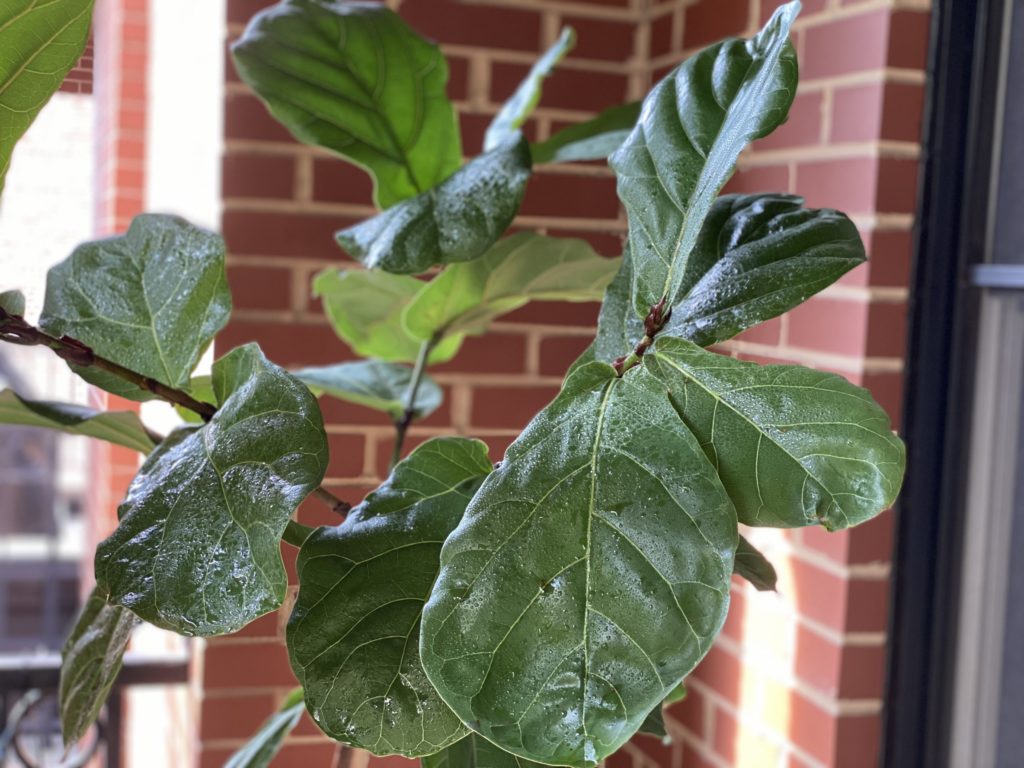
Fiddle leaf figs are all the rage these days, and for good reason – they’re pretty easy to take care of! But don’t be fooled, there are still some important things to keep in mind when it comes to their light and water requirements.
First things first, fiddle leaf figs are all about that bright, indirect light. Direct sunlight? No thank you! It’ll just scorch those beautiful leaves. So, make sure to place your fiddle leaf fig near a window that gets plenty of filtered light. And if you notice those leaves turning yellow and dropping off, it’s a sign that your plant needs more light.
Now, let’s talk about watering. Fiddle leaf figs like to be consistently moist, but not waterlogged. So, when the top inch of soil feels dry to the touch, it’s time to give your plant a drink. But don’t just give it a little sip – make sure to water thoroughly and let the excess drain out of the bottom of the pot. And whatever you do, don’t let your fiddle leaf fig sit in standing water. That’s just asking for root rot.
So, there you have it – bright, indirect light and consistent moisture are the keys to keeping your fiddle leaf fig happy and healthy. And trust us, a thriving fiddle leaf fig is a thing of beauty.
Soil and Fertilizer Needs for Fiddle Leaf Figs
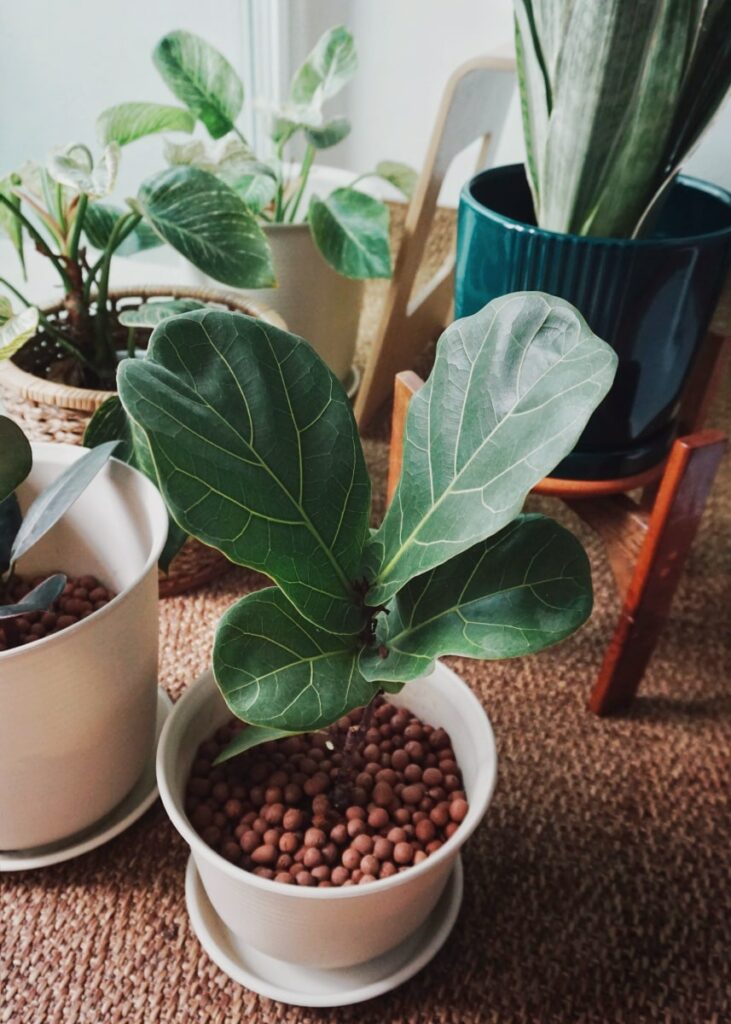
Fiddle leaf figs, with their grandiose and glossy leaves that can reach up to 18 inches in length, are a sight to behold. But, to keep these plants in tip-top shape, it’s crucial to provide them with the appropriate soil and fertilizer.
When it comes to soil, fiddle leaf figs are quite picky. They prefer a well-draining mix that is jam-packed with nutrients. A mix of peat moss, perlite, and vermiculite is a great option. This will give the plant the perfect balance of moisture and air circulation, which is vital for healthy root growth.
As for fertilizer, fiddle leaf figs require regular feeding during the growing season, which is typically in the spring and summer. A balanced, water-soluble fertilizer with an NPK ratio of 3-1-2 is the ideal choice. This will provide the plant with the necessary nutrients for healthy growth and development.
It’s important to keep in mind that over-fertilizing can be detrimental to fiddle leaf figs. Therefore, it’s best to follow the instructions on the fertilizer package and avoid applying too much. Additionally, it’s recommended to avoid fertilizing during the winter months when the plant is in a dormant state.
By providing your fiddle leaf fig with the right soil and fertilizer, you can help ensure that it stays healthy and vibrant for years to come. So, don’t skimp on the soil and fertilizer, and watch your fiddle leaf fig flourish!
Common Problems and Solutions for Fiddle Leaf Figs
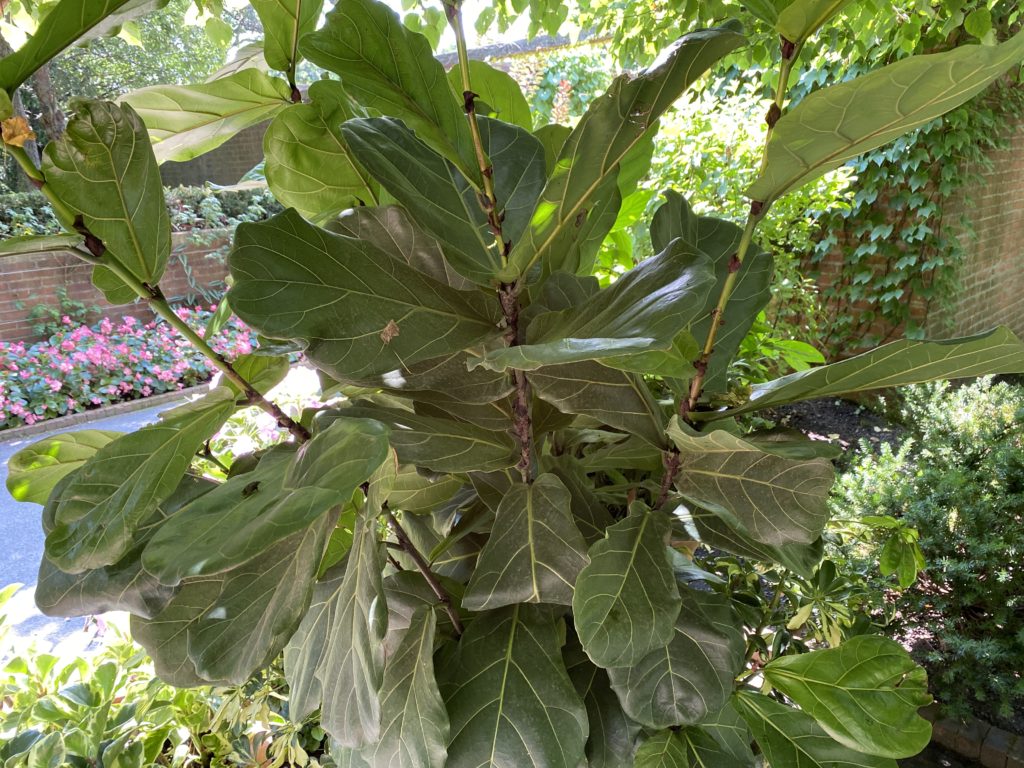
Fiddle leaf figs are all the rage these days, but they can be quite finicky and prone to a variety of problems. Here are some common issues that fiddle leaf fig owners may encounter, along with some solutions to help keep your plant healthy and thriving.
One issue you may encounter is brown spots on the leaves. This can be caused by a variety of factors, including overwatering, underwatering, too much direct sunlight, or pests. To address this issue, make sure you are watering your plant properly (allow the top inch of soil to dry out before watering again), avoid placing it in direct sunlight, and inspect the leaves for any signs of pests (such as spider mites or mealybugs). If you do find pests, treat the plant with an appropriate insecticide.
Another issue you may encounter is yellowing leaves. This can be a sign of overwatering, underwatering, or nutrient deficiencies. To address this issue, make sure you are watering your plant properly and fertilizing it regularly with a balanced fertilizer. You may also want to consider repotting your plant if it has outgrown its current container.
Drooping leaves can also be a problem, and can be a sign of underwatering or overwatering. To address this issue, make sure you are watering your plant properly (allow the top inch of soil to dry out before watering again) and avoid letting it sit in standing water.
Root rot is a common problem for fiddle leaf figs, especially if they are overwatered or planted in soil that doesn’t drain well. To prevent root rot, make sure your plant is planted in well-draining soil and avoid overwatering it. If you suspect your plant has root rot, you may need to repot it in fresh soil and trim away any affected roots.
Speaking of roots, you may also see roots exposed if your Fiddle has been in its pot for some time. This is due to either slow soil erosion, or a sign that your Fiddle Leaf Fig is ready to be repotted. The quick fix here is to simply add more soil, but if your plant has been in the same pot for 2-3 years, it may be time to find a bigger container to promote future growth.
By being aware of these common problems and taking steps to address them, you can help ensure that your fiddle leaf fig stays healthy and beautiful for years to come.
Tips for Choosing and Styling Fiddle Leaf Figs in Your Home
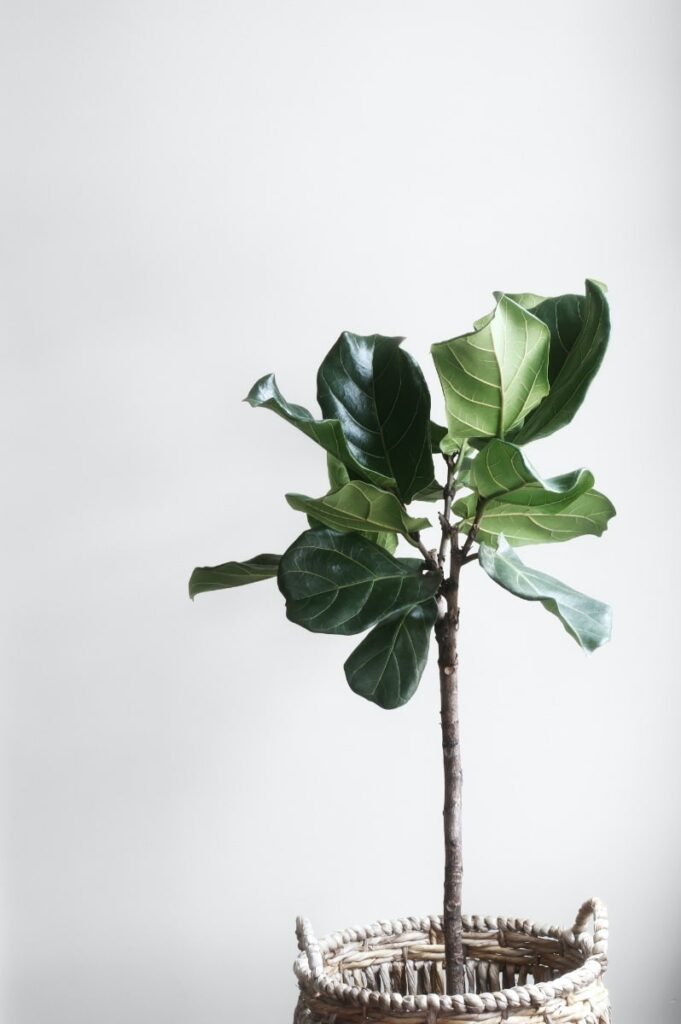
Fiddle leaf figs are all the rage when it comes to indoor plants. Their large, glossy leaves and striking appearance make them a popular choice for those looking to add some greenery to their homes. But with so many options out there, how do you choose and style the perfect fiddle leaf fig? Fear not, for we have some tips to help you out.
First and foremost, when selecting a fiddle leaf fig, it’s important to choose a healthy plant. Look for one with healthy, green leaves and no signs of damage or disease. Check the soil to make sure it’s moist but not waterlogged, and avoid plants with yellowing or drooping leaves. This will ensure that your fiddle leaf fig stays healthy and vibrant for years to come.
Next, consider the size of your space before choosing a plant. Fiddle leaf figs can grow quite tall, so if you have high ceilings or a large room, a taller plant may work well. However, if you have limited space, a smaller fiddle leaf fig may be a better choice. This will help ensure that your plant fits in seamlessly with your existing decor.
When it comes to placement, fiddle leaf figs prefer bright, indirect light. So, choose a spot near a window but out of direct sunlight. They also like consistent temperatures and humidity, so avoid placing them near drafty windows or air conditioning vents. This will help ensure that your plant stays healthy and happy.
Now, let’s talk about styling. Fiddle leaf figs look great in a variety of pots, from sleek and modern to rustic and natural. Choose a pot that complements your decor and the style of your home. This will help your plant blend in seamlessly with your existing decor.
Finally, consider styling your fiddle leaf fig with other plants. While they look great on their own, they also pair well with other indoor plants. Consider grouping your fiddle leaf fig with other indoor plants to create a lush, tropical vibe in your home. This will help create a cohesive look and feel throughout your space.
By following these tips, you can choose and style a fiddle leaf fig that will add beauty and style to your home. With their striking appearance and easy care, it’s no wonder why fiddle leaf figs are so popular among plant lovers.
Conclusion: Why Fiddle Leaf Figs are Here to Stay
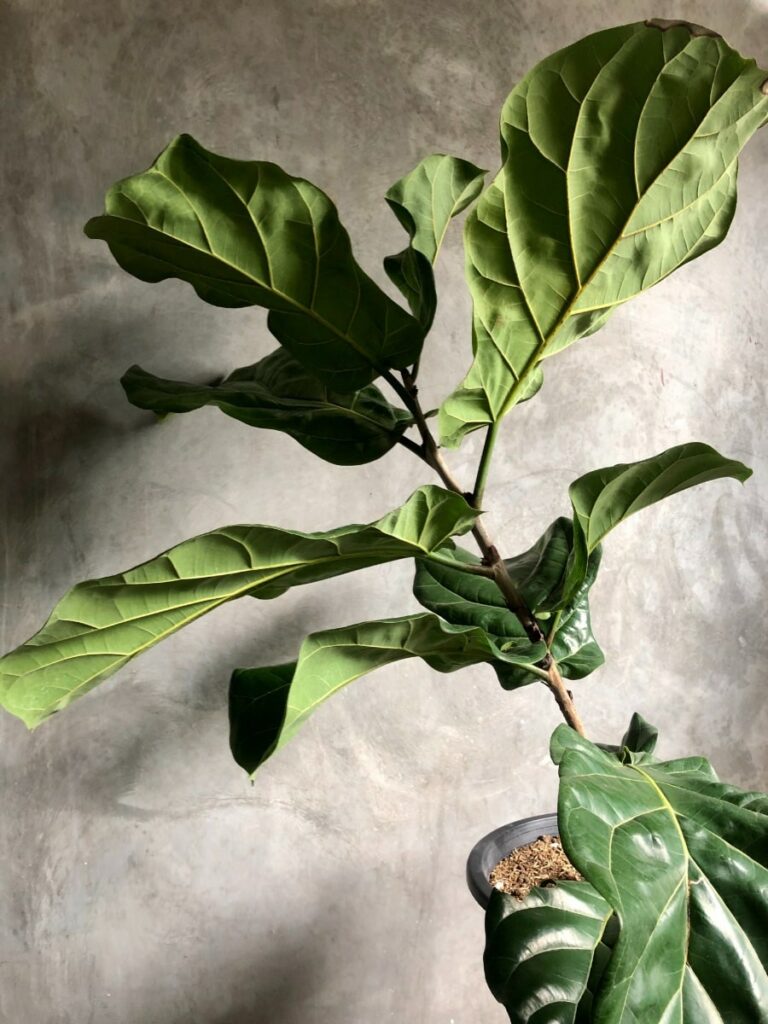
With their timeless elegance and versatility, it is no surprise that fiddle leaf figs have cemented their place in the world of plant collecting. Whether you are an interior designer looking to make a stunning statement with a gorgeous plant, a tropical grower looking to add a towering tree for your landscaping, or a plant collector that want to bring some greenery home, the Fiddle is an incredible choice, and widely available. With a relatively easy-going nature and beautiful foliage, it’s no wonder why Fiddle Leaf Figs are so popular today!
Frequently Asked Questions
What is a fiddle leaf fig?
A fiddle leaf fig is a type of indoor plant that is native to western Africa. It has large, glossy leaves that resemble the shape of a fiddle or violin.
Why are fiddle leaf figs so popular?
Fiddle leaf figs have become popular due to their aesthetic appeal and ability to add a touch of greenery to any space. They are also relatively easy to care for and can thrive in a variety of indoor environments.
How do I care for a fiddle leaf fig?
Fiddle leaf figs require bright, indirect sunlight and regular watering. It is important to avoid overwatering and to allow the soil to dry out slightly between waterings. They also benefit from occasional fertilization and pruning to maintain their shape.
Can fiddle leaf figs be grown outdoors?
Fiddle leaf figs are typically grown as indoor plants, but they can be grown outdoors in warm, tropical climates. They require well-draining soil and protection from direct sunlight and strong winds.
Are fiddle leaf figs toxic to pets?
Fiddle leaf figs are toxic to pets if ingested. It is important to keep them out of reach of pets and to seek veterinary attention if ingestion occurs.

